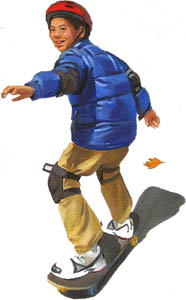
Morning Commute


Starting off with some despiriting news: in the wake of the Health Care Reform debate, several black congressmen, including John Lewis, have been called racial slurs and one was even spat on by protesters.
At Love Isn’t Enough, there’s a great piece on DNA and identity. It adds another layer to the discussions on being biracial and multiracial we’ve been having, because it looks at how little we know about our own personal genetic and racial makeup, but how much we know about our own personal cultural makeup.
For your watching pleasure, Colbert’s best comments on race collected in one four-minute clip:
[vodpod id=Video.3306293&w=425&h=350&fv=autoPlay%3Dfalse]
Many of our books, including this season’s The Can Man deal with economic concepts. We asked Yana V. Rodgers, a professor at Rutgers and head of the Rutgers University Project on Economics and Children, to talk about why and how to teach economics in today’s busy classrooms.
Building Blocks for the Future
Decades of research in economics, education, and early-childhood development have shown that young children enter the primary grades with an experience-based knowledge of economics and that they are quite capable of learning basic economics during the primary grades. The economic lessons that young students learn in their early education form the building blocks toward achieving a solid understanding of economics at higher levels of educational attainment. Students in the primary grades are already gaining a rich exposure to a wide variety of ideas in economics, and they are gaining the skills to apply this new knowledge. The principles taught at a level appropriate for primary-grade students are crucial for a basic understanding of the economic world around them.
 Educational reforms since the 1960s have led to the development of formal content standards in economics and the infusion of economics as a central component of social studies curricula in every grade level. Because of the standards movement, even elementary school teachers face considerable pressure to teach economic content that is based on state requirements and is often linked to school accreditation and funding. Increasingly crowded curricula are a common issue, and many teachers feel they are too busy to teach economics. As almost all states have added economics to their state-mandated curricula in the primary grades, teaching strategies have needed to change.
Educational reforms since the 1960s have led to the development of formal content standards in economics and the infusion of economics as a central component of social studies curricula in every grade level. Because of the standards movement, even elementary school teachers face considerable pressure to teach economic content that is based on state requirements and is often linked to school accreditation and funding. Increasingly crowded curricula are a common issue, and many teachers feel they are too busy to teach economics. As almost all states have added economics to their state-mandated curricula in the primary grades, teaching strategies have needed to change.
In response to a growing interest in foreign language books from parents and kids alike, Amazon.com announced an update to their digital reader—the Kindle—that would allow three new languages into their growing digital library. In a February 19th announcement, Amazon unveiled an update to the Kindle text platform, allowing Spanish, Portuguese and Italian authors to upload and sell digital versions of their books over the internet.
Spring is has reached New York! Here’s your weekly dose of links to ponder as you sit and bask in the sun.
Following up on last week’s links dealing with interracial writing in the speculative fiction community is Nisi Shawl, who hits home with a description of a panel on writing and racial identity at a recent convention: “Our fourth panelist had been raised as an American Indian and spent her life knowing absolutely that this was who and what she was. Then she discovered through genetic testing that her biological heritage is a mix European and Sub-Saharan African. No American Indian.” Fascinating stuff!
Continuing last week’s conversation on being biracial or multiracial—in a video and link to an essay about census—we have a video looking back to the 2008 presidential campaign and a group of multiracial students at Rutgers:
Here in New York, we were walloped by rain this weekend. Which begs the question:
Yesterday we posted a video on the frustrations of biracial people being put into little boxes. Taking a very different view is Michele Elam, with a thought-provoking article about the pitfalls of “mark one or more races” on the census.
On her blog, author Shannon Hale takes a look at the lack of girls in children’s movies, the limited roles they play, and an appeal to parents: take your sons to movies with girl heroes. The same goes for books and the same goes for other types of diversity: give the children you know books with heroes who don’t look like them.
An eloquent look at being biracial:
[youtube=http://www.youtube.com/watch?v=hXkPdC_a-ME&w=475]